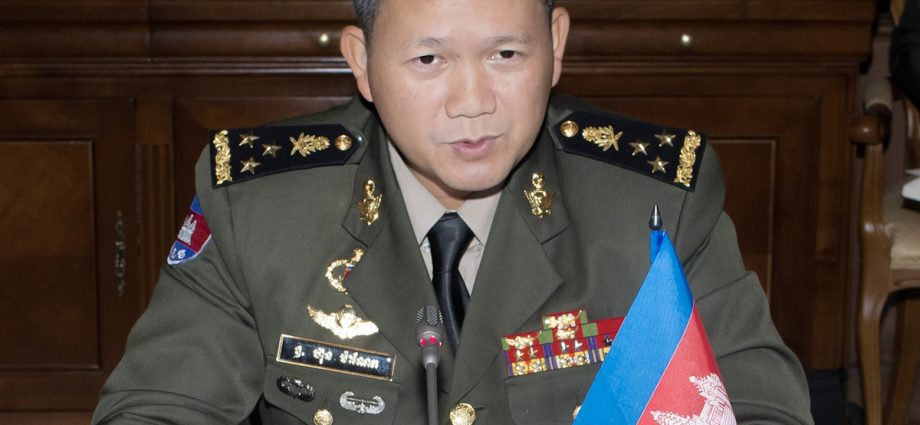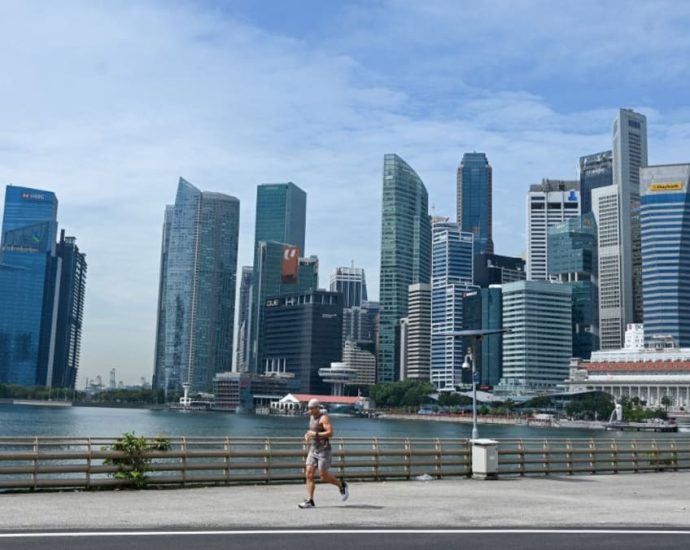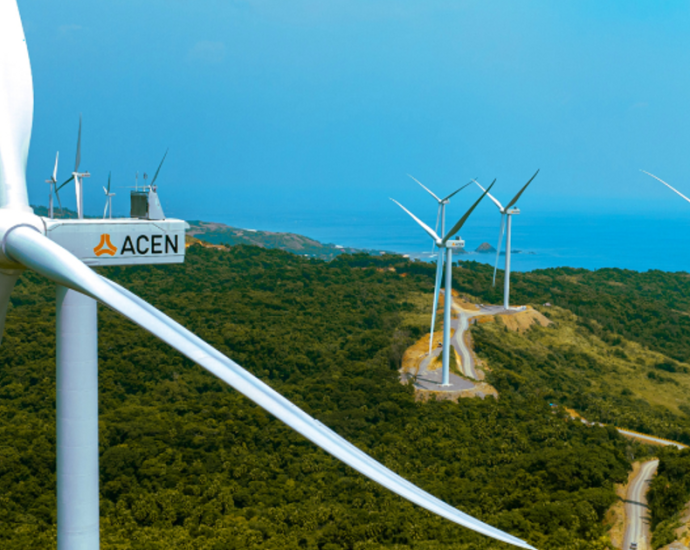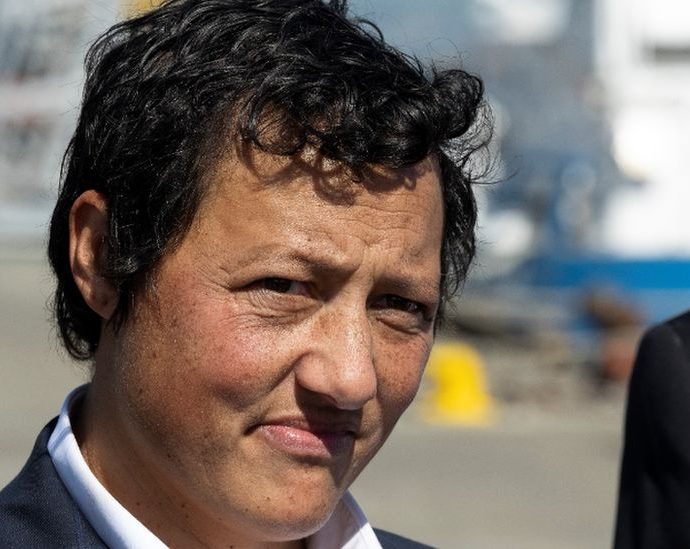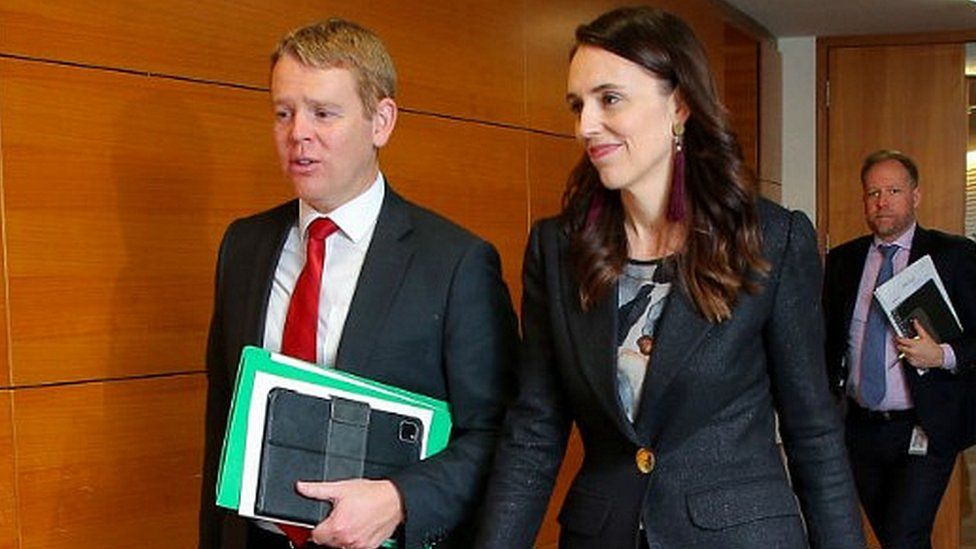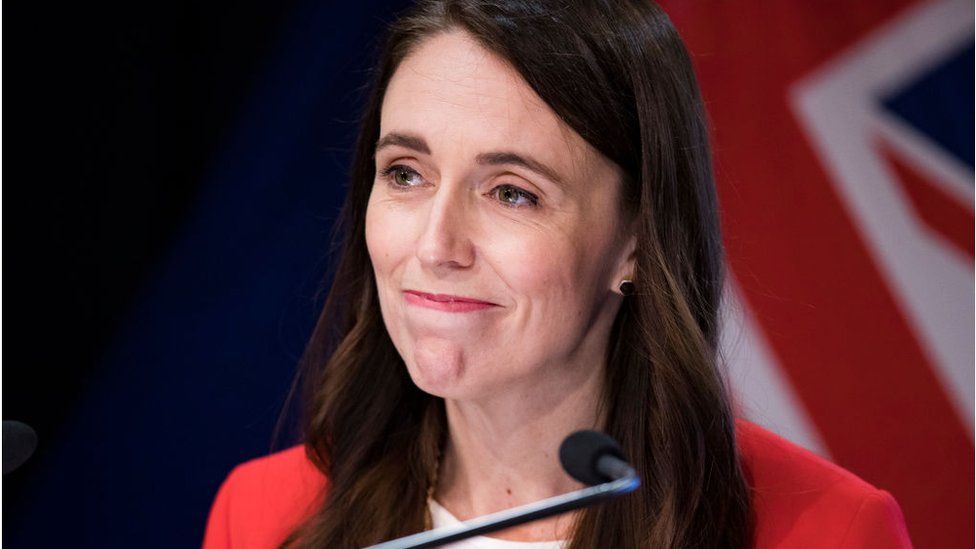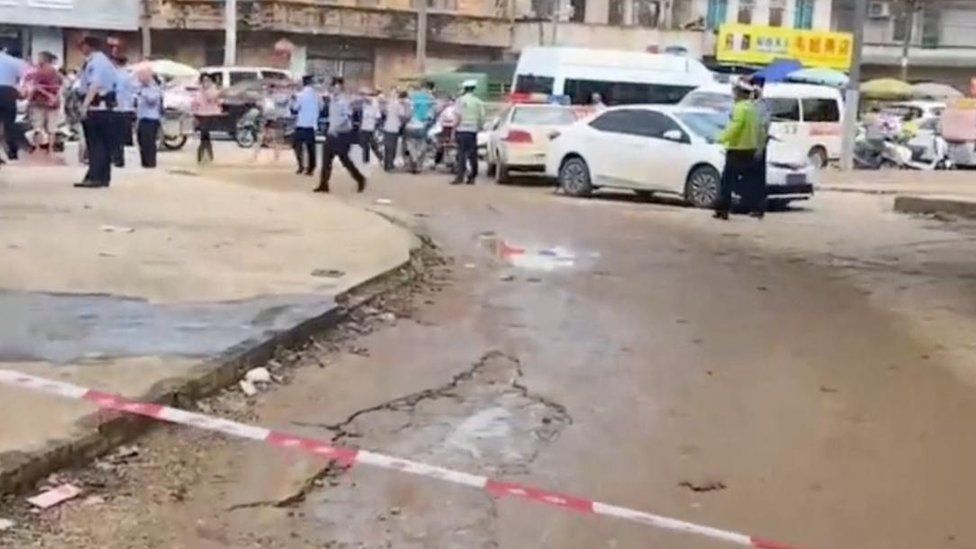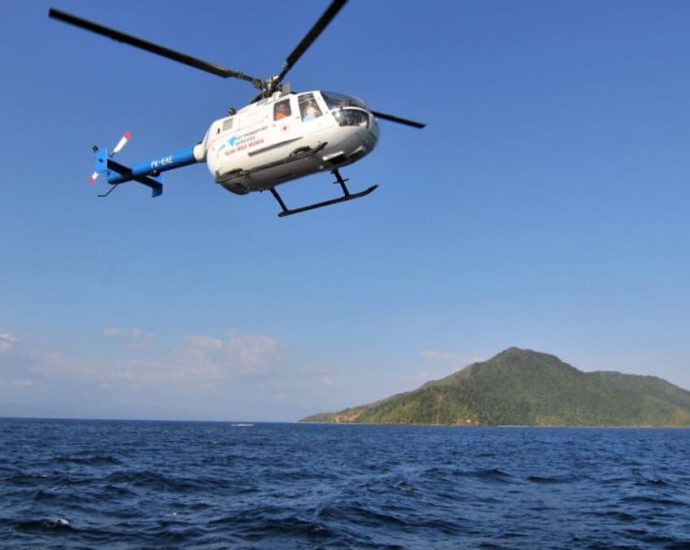Stage set for Cambodiaâs next-gen dynasty

Cambodia’s ruling party has clinched yet another landslide victory in an “unfree and unfair” general election, pocketing all but five of the 125 parliamentary seats up for grabs, according to the latest unofficial results.
Victory for the Cambodian People’s Party (CPP), which has been in power since 1979, was assured after it disqualified its only viable rival from competing in the ballot in May.
The real question was how many people would turn up to vote at Sunday’s election and how many would heed the calls of banned and exiled opposition leaders to boycott the election or spoil their ballots.
After polls closed on Sunday evening, the National Election Commission (NEC) put voter turnout at 84%, slightly higher than the last general election in 2018.
“This allows us to conclude that our people have participated in the democratic movement in Cambodia,” Prime Minister Hun Sen said in a voice message on social media on Sunday evening, according to local media.
“They want to maintain the existing and continuous harmony and prosperity, and want to get away from the extremist group who always causes destruction,” he added, referring to exiled opposition leaders.
On Sunday evening, a ruling-party spokesman suggested there may be 300,000 spoiled ballots, which appears to be a low-ball figure.
There were almost 600,000 spoiled ballots at the 2018 general election, or nearly a tenth of the vote, far more than the share of the electorate who voted for the second-placed party.
The royalist Funcinpec party, which received a mere 1.2% of the vote in a commune election last year, is believed to have won closer to a tenth of the popular vote on Sunday, picking up five seats in parliament, according to unofficial results.
Hun Sen, who turns 71 next month, has ruled Cambodia since 1985, making him the longest-serving head of government in the world.
In recent years, the self-styled strongman has consolidated a “personalist” rule over Cambodia, now a de facto one-party state.
Since the beginning of the year, the government has closed down independent newspapers, harassed an already beleaguered civil society, and imposed intimidating loyalty tests across all areas of society.
An estimated 6,000 opposition supporters have defected to the ruling party, either because of threats or financial gain, this year alone, according to pro-government media.
At times, Hun Sen’s actions appeared “paranoid,” analysts said.
The opposition Candlelight Party, which won around a quarter of votes at last year’s local elections, was rocked by lawsuits from the ruling party, forcing many of its leaders to leave the country or resign. In May, the NEC announced the party’s disqualification from this month’s election over a paperwork technicality.
Foreign reaction
“The United States is troubled that the July 23 Cambodian national elections were neither free nor fair,” the US State Department said in a statement on Monday morning.
“As the ruling Cambodian People’s Party forms a new government,” it added, “authorities have an opportunity to improve the country’s international standing, including by restoring genuine multi-party democracy, ending politically motivated trials, reversing convictions of government critics, and allowing independent media outlets to reopen and function without interference.”
The ruling CPP controlled all 125 seats in parliament after polls in 2018.
Ahead of that ballot, the country’s only viable opposition party, the Cambodia National Rescue Party (CNRP), was forcibly dissolved on spurious charges of plotting a US-backed coup. Its leader Kem Sokha was arrested for treason and was sentenced to 27 years of house arrest in March.
The CNRP’s parliamentarians lost their seats and most fled abroad, joining the party’s co-founder Sam Rainsy in exile.
Last weekend’s election was held up by the ruling CPP as a de facto plebiscite on Hun Sen’s plans to hand over the premiership to his eldest son, former military chief Hun Manet, who played a prominent role in the party’s campaigns.
On the eve of the election, Hun Sen seemingly confirmed suspicions that his dynastic succession will take place next month when the new cabinet is formed, which is set to see a far-reaching generational shift as the party’s aging grandees make way for youthful faces, many being their own children or relatives.
“In three or four weeks, Hun Manet can become the prime minister. It depends on whether Hun Manet will be able to do it or not,” Hun Sen said in an interview with China’s Phoenix TV that aired last Thursday.
The following day, the US- and British-educated Hun Manet, 45, led the ruling party’s final-day campaign rally in Phnom Penh, from which his father was absent.
Ahead of Sunday’s election, exiled CNRP leaders called on Cambodians to spoil their ballots as a way of showing their desire for a meaningful opposition choice. They say it will be difficult to trust the official result.
“Vote counting is taking place behind closed doors. This will allow the NEC to put out any figures it pleases, but no one is going to believe them,” Sam Rainsy told Asia Times on Sunday evening.
The US, European states, Japan and Australia refused to send official election monitors. Kamnotra, a news outlet, reported that 10 political parties that took part in the election had not registered an agent to observe voting and ballot counting.
The ruling party rushed a new law through parliament last month that now makes it a crime to incite others to spoil their ballots, while also disqualifying anyone from running for office in the future who hasn’t voted in at least the previous two elections.
Most of the intrigue on election day centered on a Telegram account set up by an opposition activist in which dozens of voters purportedly posted photographs of their spoiled ballots. Hun Sen demanded they publicly apologize or they would face prosecution.
The succession
Even after stepping down from the premiership potentially next month, Hun Sen is still expected to dominate politics. He will remain president of the ruling party, a post that means he can dictate party policies and appointments.
Some commentators suspect that he may create a special cabinet position for himself or seek to become president of the National Assembly or Senate, the latter of which would mean he is acting head of state when King Norodom Sihamoni is out of the country.
Few expect real change from Phnom Penh any time soon. There is little sign that the government will open up more political space for opposition parties, especially while it undergoes a once-in-a-generation leadership succession.
The swollen bureaucracy will need to be cut down to size, which could frustrate some people who had expected lucrative promotions. The ruling party will thus remain vigilant against signs of dissent.
Hun Manet, who attended the elite United States Military Academy at West Point, New York, and later studied at New York University and the University of Bristol in the UK, speaks English fluently and often comes across as more genteel than his father.
Rather than Hun Sen’s paternalist image, Manet confects a more brotherly stance, often posing with young fans.
At Sunday’s election, he ran for a parliamentary seat in the capital Phnom Penh, usually an opposition stronghold.
In 2018, Manet was made deputy commander-in-chief of the Royal Cambodian Armed Forces and commander of the army.
He was also put in charge of the ruling party’s youth wing and runs the Samdech Techo Voluntary Youth Doctor Association, a party-aligned charity that played a key role in Cambodia’s successful vaccination drive during the Covid-19 pandemic.
He was made a four-star general this year before resigning from the military so he could run for parliament.
Yet despite his expensive education in the West and his quick-fire promotion through the military, Manet often parrots his father’s political worldview.
Before the ballot opened, Manet claimed that the masses “have committed to voting for the Cambodian People’s Party to ensure a bright and prosperous future of the nation for the next generation,” he told a large crowd.
On the campaign, he said that only the CPP can maintain peace and stability and warned that “extremists,” meaning the now-banned CNRP, were trying to “destroy this election.”
Asia Times reached out to the CPP and Manet for comment.
Hun Sen has said that the next Council of Ministers, the cabinet, will be announced by the end of August.
Leaked lists of nominees that have circulated for months purport to show that there will be a far-reaching handover of power, as Asia Times documented last week.
Almost all of the ruling party’s grandees, many in their 70s, will step down and be replaced by a younger generation of officials, mostly their own children. At least half of the rumored next cabinet will be composed of relatives of the current party elite, according to the leaked lists.
It is expected that Tea Seiha, the current governor of Siem Reap province, will inherit the Defense Ministry from his father Tea Banh. A son of Interior Minister Sar Kheng will take over his position.
The children or in-laws of other CPP elites, including the late Sok An and party co-founder Chea Sim, are tipped for ministerial roles. Hun Many, another of Hun Sen’s children, is also expected to join the cabinet.
That generational succession process will ensure stability within the party, analysts say. It means that the country’s main political families will keep their own patronage and corruption networks, thus maintaining their share of the spoils of power, even while the Hun family consolidates its personalist rule over the country.
However, it remains to be seen what degree of independence Manet will have as prime minister. Prior to being elected to parliament at Sunday’s ballot, he had never previously held an elected office. Neither has he served in a governmental role.
Hun Sen is expected to dictate policy from behind the scenes, as will many of the retiring party grandees.
It is believed that the trusted Finance Minister Aun Pornmoniroth, 57, will remain in his post, having consolidated power over other economic ministries in recent years.
In March, the government laid out an economic masterplan that is expected to last until 2050, which an inchoate Manet administration will be expected to stick to.
One area where Manet might have wiggle room is foreign policy. Some analysts reckon he could attempt to mend relations with the West that have deteriorated considerably since 2017.
Washington has accused Phnom Penh of making a secret deal that will allow Chinese troops access to the Ream Naval Base, in southwestern Cambodia, which is now being redeveloped with financing from Beijing.
The United States and European Union have imposed sanctions on Cambodia, although some reckon that they are now keen to be on better terms with Phnom Penh and will potentially limit their criticism of the state of Cambodia’s politics.
“Hun Manet will give them a chance to re-engage,” said Virak Ou, founder and president of the Future Forum think-tank.
It is believed that Sok Chenda Sophea, currently head of the Council for the Development of Cambodia, a government body charged with overseeing foreign investments, will become the new foreign minister next month.
He is expected to refocus the Foreign Ministry’s agenda toward boosting inward investment and trade diversification, away from the geopolitics of a US-China “New Cold War” that the ministry appeared to be focused on previously.
However, a major foreign-policy realignment is unlikely. China remains Cambodia’s largest trading partner and investor, and the country’s economic recovery, especially in tourism and a now-failing property sector, depends on continued patronage from Beijing.
“Hun Sen being in the background also means continuity given that he maintains, with other powerful families, like the Tea family, [and] close ties with China,” said Sophal Ear, associate professor at Arizona State University’s Thunderbird School of Global Management.
Follow David Hutt on Twitter at @davidhuttjourno.
Michelin-starred Korean steakhouse Cote from New York opening in Singapore by end 2023

SPECIAL DRY-AGEING COOLER
In the American outlets, Cote’s beef is aged between a week to over four months in dry-aging rooms, sultry neon red-lit spaces. Slabs of meat are hung there for customers to admire up close.
INTERIOR DESIGNED BY NEW YORK ARCHITECTURAL FIRM
Cote’s Singapore outlet will be designed by Modellus Novus, the same architectural firm from New York which also decorated Cote’s US outlets. The restaurant is set to take on a contemporary interior, with a cocktail bar and “music room”.
Cote Singapore opens later this year at 30 Bideford Road, Como Orchard, Singapore 229922. Open daily 4pm to 2am. More info via their website.
This story was originally published in 8Days.
For more 8Days stories, visit https://www.8days.sg/
Singapore’s core inflation falls to 4.2% in June
SINGAPORE: Singapore’s core inflation continued on a downward trend and fell to 4.2 per cent year-on-year in June, official data showed on Monday (Jul 24). Core inflation rose to 5.5 per cent in February and January this year, a 14-year high, before falling to 5 per cent in March and April.Continue Reading
Sustainable Leaders series: Ayalaâs path to an ESG driven business | FinanceAsia

With several ESG-backed initiatives in recent years, the Philippines-based conglomerate Ayala has solidified its commitment to sustainability. Operating across verticals including energy, finance, infrastructure, and real estate, Ayala has committed to net zero greenhouse emissions by 2050. The conglomerate’s energy wing ACEN recently created the world’s first energy transition mechanism (ETM) in November 2022, backed by BPI and RCBC.
On the social front, Ayala’s GCash app and BPI’s BanKo have played pivotal roles in financial inclusion for unbanked Filipinos and small to medium size enterprises. BPI and Globe are currently reviewing their framework to consciously focus on these areas.
When it comes to governance, Ayala’s boards are working towards an appropriate level of diversity and independence. This involves maintaining high standards when it comes to transparency and disclosure.
The 190-year-old company’s social and sustainability initiatives have a long history. Albert de Larrazabal, CFO at Ayala Corporation said, “We have always aligned ourselves to national interest and had very high standards of governance and stewardship. As we must be mindful of the ecosystems we operate under, ESG in various forms has always been part of our value proposition.”
Ayala’s approach to ESG
Today, ESG-based financing is a priority for Ayala. Apart from ACEN’s implementation of the world’s first ETM, Ayala has issued a social bond with the IFC in support of its cancer hospital. Larrazabal said, “We are looking to do KPI-linked social and ESG financing, which incorporates targets into the commercial terms and conditions of the loan.”
Even during the M&A process, the conglomerate is mindful of integrating new acquisitions into its ESG framework. Ayala has also taken steps to ensure that ESG is a priority that is ingrained at the highest levels of the organisation, leveraging its membership with the World Business Council for Sustainable Development (WBCSD). The conglomerate’s board has received training which ensures they can play an active role in tracking and monitoring developments in the ESG space.
Corporates making public commitments to sustainability draw a lot of attention, not all of it positive. Asked how Ayala approaches concerns about greenwashing, Larrazabal said, “Sometimes it happens inadvertently because of incorrect measurements. That’s why we brought in South Pole. We have taken steps to ensure we are on the right track by committing to independent verification, to give people a degree of reassurance.”
Building a model for the APAC region
While the need for sustainable leaders is strongly felt across APAC, many countries in the region have a minimal contribution to emissions — the Philippines emits half the global average on a per capita basis. Larrazabal said, “Between 80% to 88% of our emissions — depending on individual businesses — are scope 3.” These emissions are defined as the result of activities from assets not owned or controlled by a reporting organisation, but which are a part of its value chain. Larrazabal said, “Our scope 3 is somebody else’s scope 1 and scope 2. We need an environment that enables, incentivises, and if that fails, penalises those who disregard scope 1 and 2.”
Many emerging markets grapple with issues similar to those facing the Philippines — adopting renewable energy, while meeting the demands of a growing population and economy. As a result, ETM-like arrangements may be embraced to a greater extent. Asked for his advice on managing such a transaction, Eric Francia, president and CEO at ACEN said, “It is important for investors to reconsider their position on coal, so long as the principles are well understood. One may be investing in a coal plant, but for a good purpose, which is enabling its early retirement.”
Offering a financial perspective on the ETM, TG Limcaoco, president and CEO Bank of Philippine Islands added, “We provided lending and brought in other institutions. We took reduced rates of returns for equity and debt exposure, which allowed us to shorten the life of the plant by 10 to 15 years. It is a big win for everyone involved.”
For more on Ayala’s adoption of ESG and a deeper insight into the world’s first ever ETM, please watch the accompanying video.
¬ Haymarket Media Limited. All rights reserved.
US brings new ground-based laser weapon up to speedÂ

The US is pushing to develop a new ground-based laser weapon. It sees the technology as the future of air and missile defense against proliferating artillery, drone, missile, and possibly hypersonic weapon threats.
This month, Breaking Defense reported that the US Army had selected Lockheed Martin to develop a new high-energy laser prototype to defend fixed and semi-fixed sites from air attack under a US$220.8 million contract.
The source says the contract mandates Lockheed Martin to “develop, integrate, manufacture, test and deliver” an Indirect Fire Protection Capability-High Energy Laser (IFPC-HEL) prototype weapon system.
It notes that, at present, the US Army has provided Lockheed Martin with $154 million in fiscal 2023 funding, and the remaining funds could be redirected toward the effort between now and mid-October 2025.
While Breaking Defense says Lockheed Martin deferred questions about the contract to the US Army, the company has been working on HEL projects, including a 300-kilowatt laser under the Pentagon’s High Energy Laser Scaling Initiative (HELSI).
However, the source notes that it is not clear if other companies are competing for the project, as the US Army’s Rapid Capabilities and Critical Technologies Office (RCCTO) issued a request in March for white papers on 100-kilowatt lasers and shed some additional light on program plans.
More bang for the buck
Regarding ground warfare, IFPC-HEL may be the future of counter-rocket, artillery, and mortar (C-RAM) capability.
Michael Libeau notes in a 2012 article for the Naval Surface Warfare Center (NSWC) that lasers have a greater magazine depth than gun and missile systems, since they only use electricity for operation, giving them a potentially unlimited magazine.
Libeau also notes that lasers have a cost advantage over the latter systems, with the low cost per kill matching the low cost of most C-RAM threats.
Laser weapons have several advantages over traditional projectile weapons, such as instantaneous hits, scalable shot power, and low cost per shot. However, they also have drawbacks, such as bulky power sources, high energy requirements, sensitivity to atmospheric conditions, weakening over distance, and hardening of aerial threats against lasers.
Not to be left behind, the US Navy reported in April 2022 that it had successfully tested an all-electric, high-energy weapon to defeat a drone target simulating a cruise missile in February.
The source identifies the weapon used in the tests as the Layered Laser Defense (LLD), built by Lockheed Martin to counter unmanned aerial systems and fast attack boats using a high-powered laser. It also says the LLD can use its high-resolution telescope to track inbound aerial threats, support combat identification, and conduct battle damage assessments of engaged targets.
While the US Navy has not released plans to field the LLD, the project offers a glimpse into the future of laser weapons. It notes that it is compact and powerful but more efficient than previous weapons systems. It says the LLD uses specialized optics to observe a target and focus laser beams to maximum effect while incorporating AI to improve targeting and tracking.
Although the LLD is just a prototype, it may be the future of ship-based point defense. Alex Hollings notes in a January 2023 article for Popular Mechanics that nuclear-powered aircraft carriers can be equipped with point-defense lasers that can be fired tens of thousands of times at incoming munitions without worrying about running out of ammo or missiles.
Hollings also notes that the low cost of a laser shot, ranging from $1 to $10, makes them an ideal weapon to fight off cruise-missile saturation attacks or drone swarms. However, he cautions that kilowatt-range lasers may not be enough to stop hypersonic anti-ship missiles flying at speeds of up to Mach 10, as those weapons are designed to withstand temperatures up to 925 degrees Celsius, necessitating megawatt-level lasers to counter those threats.
In addition, Asia Times reported in June 2022 that Lockheed Martin last February delivered the first fighter-mounted laser for the US Air Force, known as the Laser Advancements for Next-Generation Compact Environments (LANCE) airborne laser weapon.
LANCE is one-sixth the size of Lockheed Martin’s previous laser weapons for the US Army and has reduced power requirements so it can be mounted on a fighter jet’s belly pod. Although LANCE’s power output is unknown, it is estimated to be in the 100-kilowatt range, insufficient for missile defense but enough to burn out the seeker heads of incoming air-to-air missiles.
The LANCE is a significant improvement over older types, such as the Airborne Laser (ABL), which failed because of its impractical size and weight, coupled with beam jitter issues stemming from atmospheric distortion, leading to its early retirement in 2014.
However, technologies such as laser fiber optics that are more efficient in converting electrical power to laser power and spectral beam combination that involves focusing multiple smaller laser beams into one powerful beam has enabled the miniaturization of laser weapons, enabling them to be mounted on vehicles, aircraft and ships.
Work in progress
Asia Times reported in May 2022 that future missile defense plans might focus more on protecting small, specific areas instead of large regions. This is because hypersonic weapons can avoid current missile defenses designed to intercept them mid-flight, and it’s hard for existing space- and ground-based radars to track these fast-moving, low-altitude gliders.
However, hypersonic gliders are much slower than intercontinental ballistic missiles (ICBMs) during the terminal stages of their flight, opening a possible window for interception.
In line with that, missiles still have an advantage over lasers, as they destroy their targets instantaneously on impact, compared with lasers that must be focused on the target for a few seconds to destroy it. That may be a severe drawback when defending against a target moving at thousands of kilometers per second.
That means gun- and missile-based defenses will not become obsolete overnight, and they can be augmented with numerous point-defense lasers that can shoot down such targets during their terminal phase.
While laser weapons are still in their relative infancy, improvements such as AI-assisted beam modulation and miniaturization of power sources and critical components can make the idea of numerous, low-cost, and dispersed laser-based defenses a reality.
New Zealand: Minister quits after drink driving crash
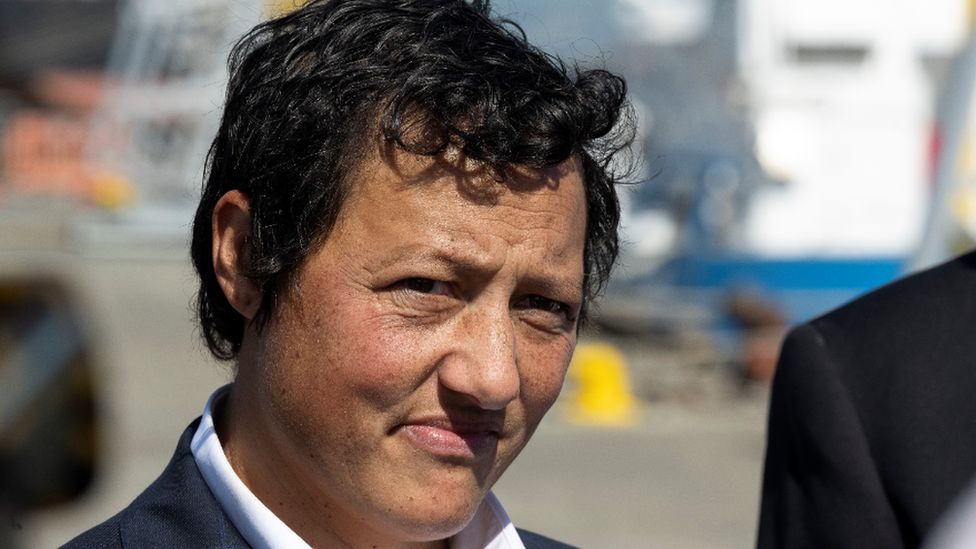 Getty Images
Getty ImagesNew Zealand’s justice minister has resigned with immediate effect, after failing an alcohol breath test in the wake of a car crash.
39-year old Kiri Allan was charged with careless driving and resisting arrest.
She is the fourth minister from Prime Minister Chris Hipkins’ cabinet to leave since March, ahead of an election in October.
No casualties were reported from the crash, which took place in Wellington on Sunday night local time.
Following her arrest, the former minister was detained at a police station for four hours before being released. She is due to appear in court at a later date.
Ms Allan, whom Mr Hipkins said had been suffering from “extreme emotional distress”, will remain as a member of parliament for now.
“She understood that retaining her ministerial warrant was untenable, especially for a justice minister to be charged with criminal offending,” said the prime minister in a press conference.
Ms Allan, who was also minister for regional development, conservation, and emergency management, had recently taken time off due to “personal difficulties”, only returning to work last Monday.
She confirmed her separation from her partner last month and is also facing accusations of poor working relationships with her staffers.
In a statement, Ms Allan said that she had returned to parliament believing she could juggle personal challenges with her job.
“My actions yesterday show I wasn’t okay,” she said, adding that she will consider her future in politics.
Ms Allan was once seen as the darling of the Labour party. She was even tipped to succeed former prime minister Jacinda Arden, who stepped down from her role earlier this year before Mr Hipkins took over.
Her resignation is the latest development in what Mr Hipkins admitted has been a “messy” time in his own party.
Transport and immigration minister Michael Wood resigned in June over his failure to disclose a possible conflict of interest in stock ownership. A month earlier, customs minister Meka Whaitiri switched sides to join another party.
Four months ago, police minister Stuart Nash in March was also fired after it was revealed he had given confidential information to donors.
An April opinion poll predicted a close contest in the upcoming election between the centre-left Labour party and its main opposition the National party.
Related Topics
South Korean rapper Bang Yong-guk earns praise for having prayer breaks during Malaysian concert

In a stark contrast to the Matty Healy controversy, South Korean rapper Bang Yong-guk has won praise for his actions during his recent concert in Malaysia. On Thursday (Jul 20), the former BAP leader was performing at Kuala Lumpur’s Shantanand Auditorium as part of his ongoing Colors Of Bang Yongguk tour.
In a video posted by Twitter user Malaysian Kpop Fans, it was revealed that Bang paused his concert to allow Muslim fans to perform their prayers.
China to widen ASEAN trade with first major waterway in 700 years, but will Pinglu Canal be a game changer or white elephant?
The canal, a signature project in China’s Western land-sea trade corridor to reach the Beibu Gulf – also known as the Gulf of Tonkin – and the South China Sea, is expected to carry 108 million tonnes of cargo by 2035 and 130 million tonnes by 2050, according to theContinue Reading
China: 11 die in gymnasium roof collapse, one arrested
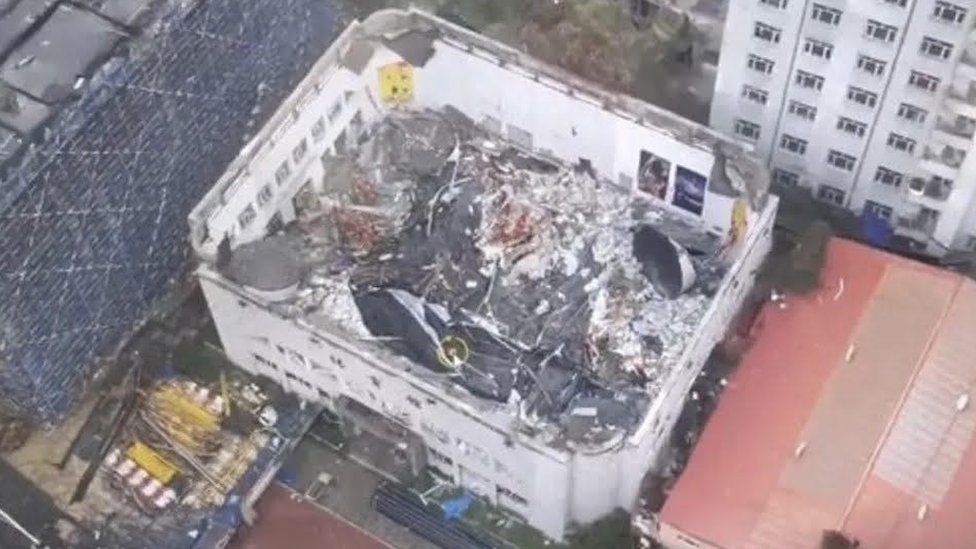 Chinese local media
Chinese local mediaAt least 11 people are now known to have died after the roof of school gymnasium collapsed under heavy rain in north-east China, state media reports.
Officials say 19 people were trapped inside the gym when it collapsed.
Eyewitnesses told media that many of the victims are children, although this is yet to be officially confirmed.
Police have arrested the person in charge of the building in Qiqihar city in the industrial Heilongjiang province.
Officials say four people managed to escape. Of the 15 people pulled out of the rubble, only four have survived.
Perlite, a form of volcanic glass, that was piled on the roof soaked up rain water, causing it to collapse at 15:00 local time Sunday, investigators say.
Construction accidents are common in China and have been blamed on lax safety standards and poor enforcement.
Related Topics
At least 15 killed, 19 missing in ferry sinking in Indonesia
JAKARTA: Indonesian authorities were searching for missing passengers on Monday (Jul 24) after a ferry sank off Sulawesi island, killing at least 15, the national search and rescue agency said. Of 40 passengers on board, 19 were still missing, while six survived, the agency said in a statement. The causeContinue Reading

